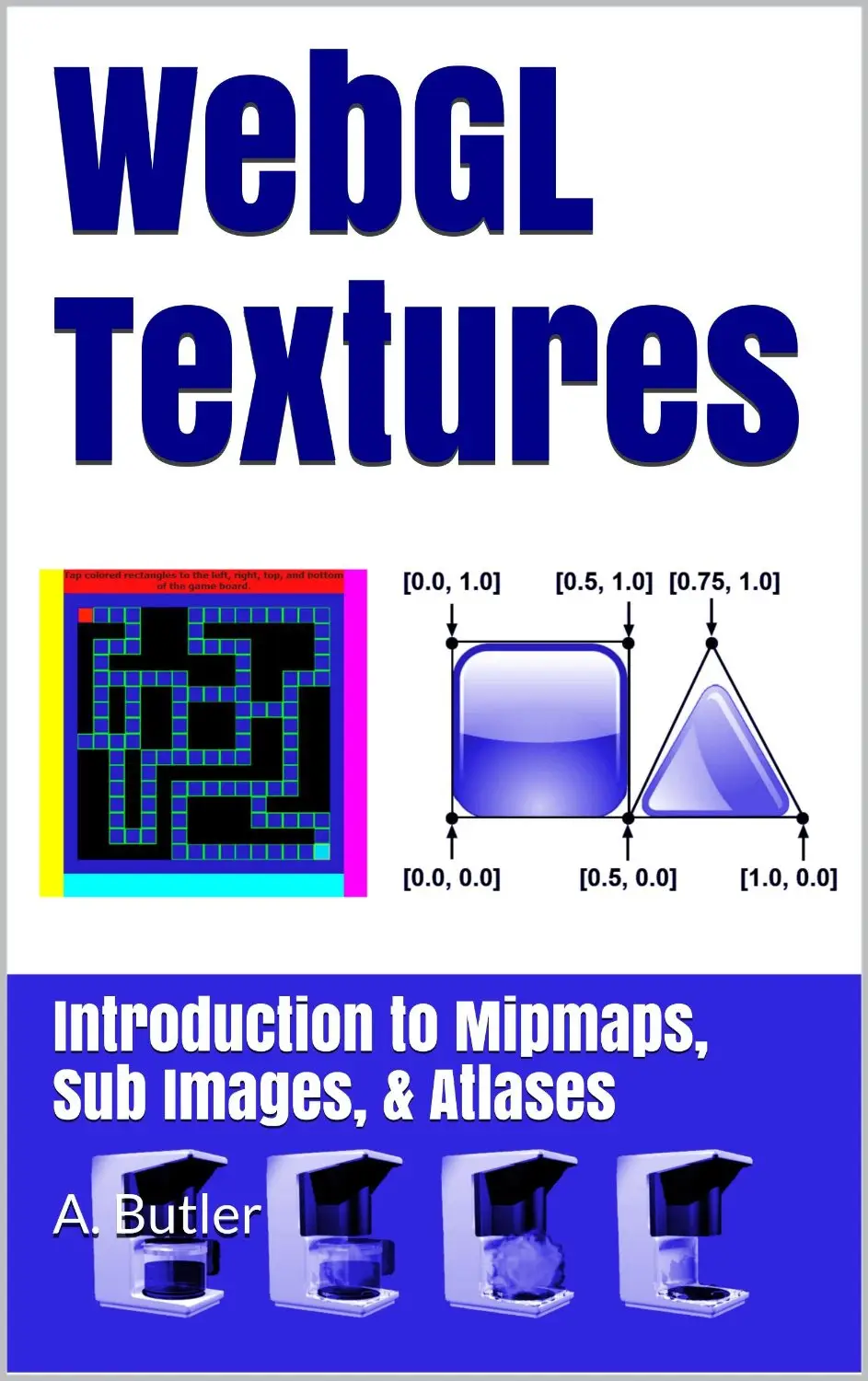WebGL Textures: Introduction to Mipmaps, Sub Images & Atlases (Online 3D Media with WebGL Book 2) by A. Butler
English | 22 Jun. 2015 | ASIN: B0107LUYLQ | 236 Pages | EPUB/MOBI/PDF (conv) | 7.01 MB
English | 22 Jun. 2015 | ASIN: B0107LUYLQ | 236 Pages | EPUB/MOBI/PDF (conv) | 7.01 MB
“WebGL Textures: Introduction to Mipmaps, Sub Images & Atlases” explains the purpose and and use of mipmaps, how to apply sub images, texture atlas basics, and how to display an animated image from a texture atlas. This book includes instruction, diagrams, fully commented source code, and online examples for each project.
Mipmaps, sub images, and texture atlases offer unique advantages. The techniques either provide performance improvements or reduce development time.
We cover sub images with the WebGL method texSubImage2D() and two overloads. One overload copies procedural image data. The other overload copies Image object data to a WebGLTexture. We demonstrate how to use mipmaps with WebGL methods generateMipmap(), and texParameteri(). We explain how to modify parameters to vertexAttribPointer() for use with texture atlases. We demonstrate how to render two unique meshes which share one vertex buffer object and one texture.
We assume readers understand how to order vertices and apply texture maps with WebGL. If not please read the first book in this series, or look online for information regarding WebGL and textures. The first book titled “WebGL Vertices & Textures: Beginner's Guide”, explains texture application and vertex layout for beginners. This second book in the series provides optimization techniques and more details regarding textures with WebGL.
WebGL enables rapid display of 2D and 3D animated and interactive graphics on the Web. Games, animation, scientific simulation, interactive presentations, and other graphic intensive Web pages can run faster with WebGL.
As of fall 2014 every major operating system supports WebGL including Windows PCs with Internet Explorer 11, Macintosh OS X Yosemite, Android with Chrome and Firefox browsers, iPhone 6, and Windows Phone.
We believe WebGL represents the future of online 3D media and games. We're preparing our readers for the next wave of Web media with a series of short focused tutorials. Tutorials include working examples, diagrams, graphics, and instruction.



